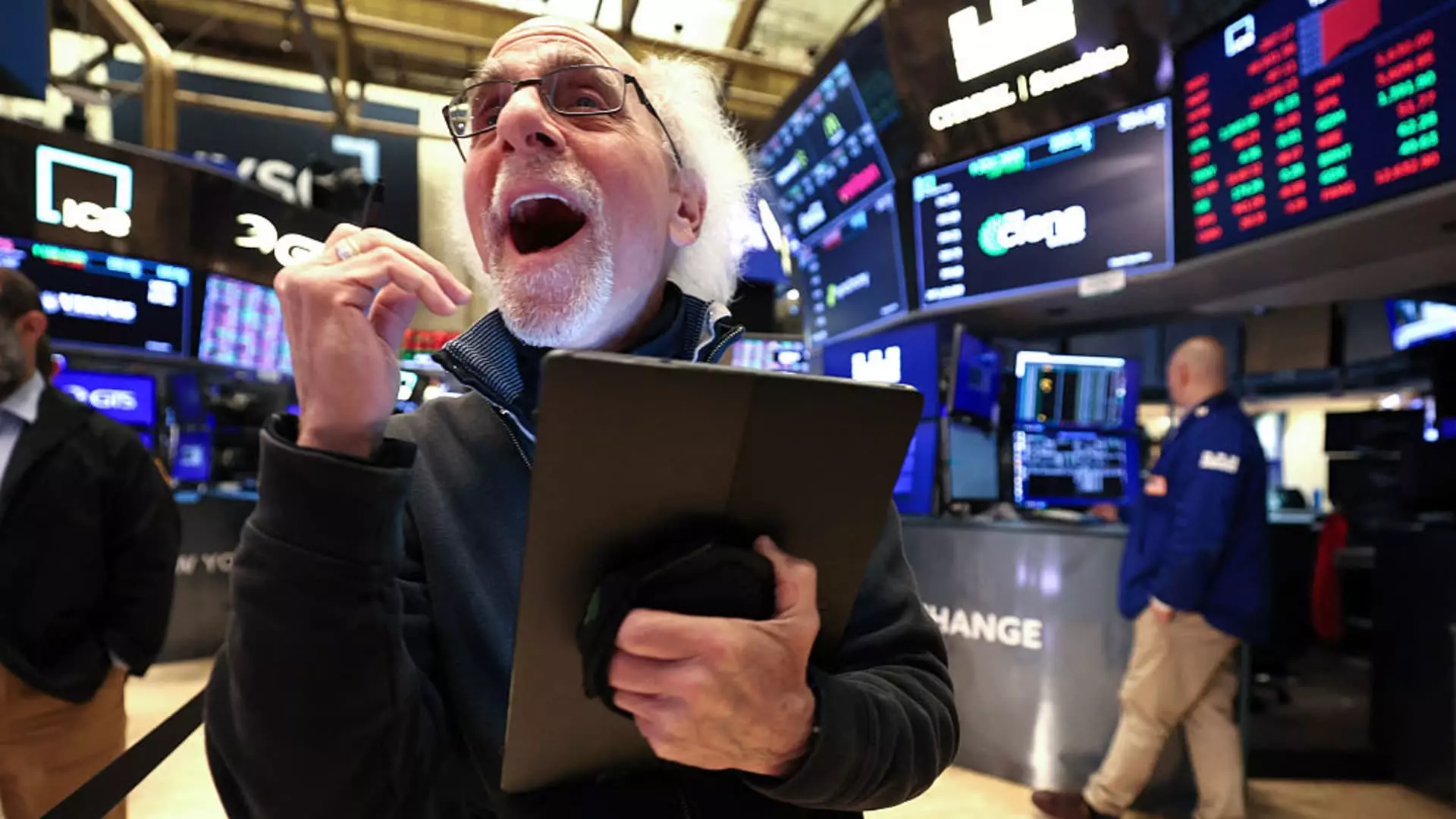The recent surge in the stock market, particularly the impressive gains of the S&P 500 and Nasdaq, reflects a misplaced confidence that borders on complacency. Investors, buoyed by a wave of robust earnings reports, seem to believe that the economic fundamentals are as resilient as they appear. However, this optimism masks deeper vulnerabilities rooted in systemic issues that are often overlooked in the rush toward short-term gains. It’s easy to celebrate record highs and bullish forecasts, but a cautious, even skeptical, view reveals that much of this euphoria is built on shaky ground.
The perception that the market is “doing what it normally does” simplifies the complex realities of economic health. While some analysts highlight the possibility of a 10% increase from current levels, this projection glosses over the persistent threats that loiter behind the scenes. The narrative of steady growth and positive earnings misses the underlying fragility caused by global geopolitical tensions, inflation persistence, and structural inequalities that threaten long-term stability. These are not issues easily dismissed with a few good earnings reports—they are fundamental concerns that will determine whether the market’s short-term rally is sustainable or just a fleeting illusion.
The Materialism of Earnings and the Illusion of Strength
In the current climate, earnings are being hailed as the bedrock of market confidence, but this is a dangerously superficial view. While it’s true that over 85% of S&P 500 companies beating expectations and the second quarter tracking a modest 5% increase is encouraging, these numbers do not tell the full story. Corporate earnings can often be inflated by accounting maneuvers, cost-cutting measures, or one-off gains that do not translate into sustainable growth. Relying heavily on earnings reports as the primary indicator of economic health risks ignoring underlying vulnerabilities such as rising debt levels, labor market dislocations, and geopolitical risks.
The anticipation around megacap stocks like Alphabet and Tesla further underscores this fragility. Their performance can significantly influence market sentiment, yet they are not immune to broader economic headwinds. The fact that Tesla, despite being a symbol of technological innovation, ended lower during the session, illustrates that even these high-flyers are subject to market volatility stemming from factors beyond earnings alone. Overemphasizing these giants risks creating a false narrative that the entire economy is resilient, when in reality, these stocks are often detached from the broader economic landscape.
The Political and Geopolitical Undercurrents
The political backdrop complicates the market’s optimistic narrative. The White House’s reiteration of tariffs as a thorn in the side of the economy introduces an element of geopolitical concern that cannot be dismissed as mere noise. The “hard deadline” for tariff payments on August 1 is a ticking time bomb that could reignite trade tensions, leading to volatility and uncertainty that could quickly undo recent gains.
Investor confidence, especially in a center-leaning liberal context, should be tempered by awareness of political decisions that have long-term repercussions. Standard market cheerleading overlooks how policy shifts—whether in trade, fiscal stimulus, or regulatory environments—can rapidly transform a market that currently appears resilient into one facing serious headwinds. The rosy picture painted by earnings and technical analysis fails to account for the unpredictability that politics injects into economic momentum, making the current optimism potentially premature and misplaced.
The Fallacy of Market Resilience and the Danger of Complacency
Market commentators often cite historical patterns—that after sharp corrections, markets tend to rebound and grow—yet they overlook how those patterns are not guarantees. The narrative that the ‘market typically recovers after a correction’ can breed complacency, leading investors to ignore warning signs that signal a potential downturn. The idea that the S&P 500 could reach 6,600 before retreating assumes a linear progression based on past behavior rather than acknowledging the myriad risks that could derail this trajectory.
Furthermore, this outlook often dismisses the deeper structural issues such as income inequality, housing affordability, and climate-related disruptions. These systemic concerns are more likely to influence the economy in unpredictable ways, reminding us that superficial markers of success—like closing above 6,300 or record intraday highs—do not equate to true economic health. For center-leaning liberals, critical reflection on these underlying issues should be front and center, emphasizing the importance of policies that foster sustainable growth rather than short-term market euphoria driven by a few influential tech giants and positive earnings surprises.
In essence, current market optimism may be a mirage, a temporary reprieve before the storm of long-standing economic and political challenges returns to shake investor confidence. A discerning perspective recognizes that beneath the glittering surface, cracks are forming—cracks that could expand into fractures if not addressed with pragmatic, forward-thinking policies. Until then, markets may continue their climb, but the risks of a more profound correction remain ever-present, fueled by underlying systemic weaknesses that few are willing to confront head-on.


Leave a Reply